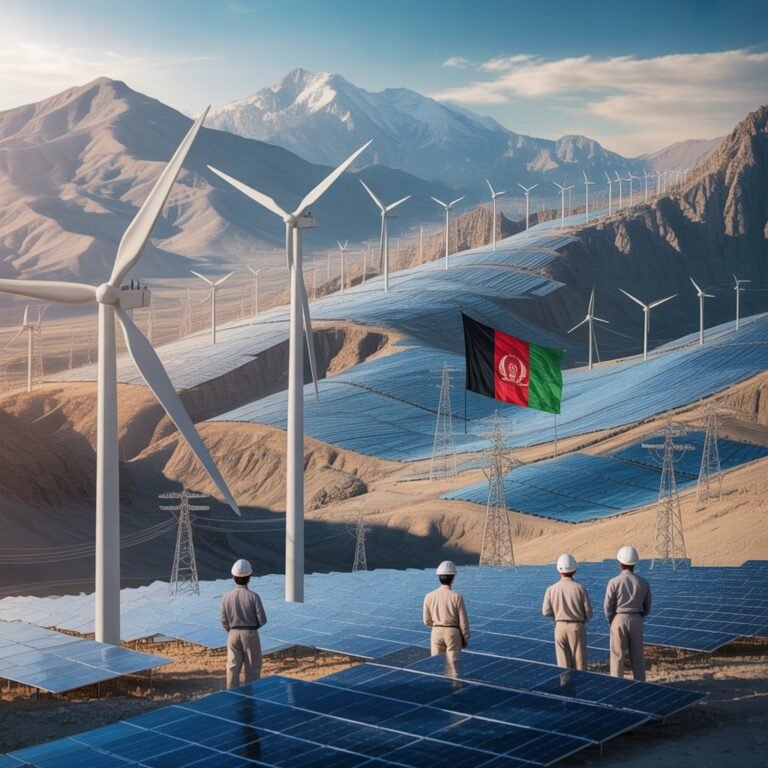Afghanistan has started a $10 billion power infrastructure project to generate 10,000 megawatts (MW) of electricity nationwide, marking a major step in the country’s energy sector transformation. The goal of this historic project is to lessen the country’s dependency on foreign energy and provide the groundwork for long-term energy independence.
Under a Memorandum of Understanding with the Ministry of Energy and Water, private Afghan company Azizi Energy is leading the project. It is among the biggest investments made to date in Afghanistan’s energy sector.

Highlights of the project:
- $10 billion was invested in total.
- Goal for Power Generation: 10,000 MW
- Energy sources include solar, wind, hydroelectric, natural gas, and coal.
- Timeline for Implementation: 6–10 years
- Local Impact: 98% of the new jobs will be from Afghanistan, and up to 150,000 jobs will be generated.
- 4,000 MW of the total power to be produced will be used for public services and residential purposes, and 6,000 MW will be used for commercial and industrial purposes. Phases of the project will be implemented, with the first 2,000–3,000 MW anticipated to go online first.
Afghanistan’s latent natural resources will be accessed by the varied energy mix, with regional deployment contingent on resource availability:
- Balkh, Bamiyan, and Herat coal projects
- Facilities for natural gas in Jawzjan and the northern provinces
- Hydropower in Daikundi, Kabul, and the neighboring regions
Strategic Objectives:
- Lessen dependency on imported power (now more than 80%)
- Avoid spending more than $250 million a year on imported electricity.
- Establish a self-sufficient and sustainable national electricity grid.
- Create the framework for future electricity exports that may be possible.
Officials stressed that field surveys and groundwork will start right away, and technical drawings will be finished in six months. This massive project is anticipated to transform Afghanistan’s energy environment and serve as a pillar of its economic recovery and expansion if it is carried out properly.




